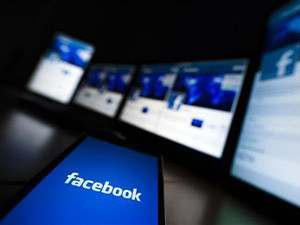
Facebook is the first hi-tech service or platform in SA that has seen exactly equal take-up by males and females, according to the SA Social Media Landscape 2015 report, released today by World Wide Worx and Fuseware.
The headline findings, announced in September, showed Facebook remained the most popular social network in SA, followed by YouTube and Twitter. The study excludes instant messaging services.
In a market where there is still a small male bias in the use of the Internet and e-commerce, the results underline the extent to which social media has become mainstream, says the report. Of those Facebook users whose gender is identifiable, 5.6 million local males and 5.6 million local females use the platform.
"This is a clear sign of both the maturity of the platform and its mainstream use as an everyday tool rather than as a hi-tech choice," says Arthur Goldstuck, MD of World Wide Worx.
"From a marketer's point of view, an equally significant finding is that, of a total of 11.8 million South African users - 22% of the population - 8.8 million access it on their mobile phones. This means that targeting Facebook users is not a matter only of marketing on the Facebook Web site - its mobile properties are probably more important."
Mike Wronski, MD of analytics company Fuseware, points out the Facebook user base is beginning to resemble the South Africa urban population: "The highest growth in the user base is seen in three key economic hubs, namely Johannesburg (55%), Pretoria (49%) and Cape Town (44%). Interestingly, Nelspruit continues to show high growth, at 40%."
The single biggest platform for Facebook from a phone operating system point of view is Android, growing from 1.26 million in 2013 to 3.2 million in 2014. BlackBerry has fallen from the top position to second, but dropping only marginally in user numbers, from 2.6 million to 2.4 million. Windows Phone is beginning to emerge from below the radar, rising from 124 000 to 260 000. iOS remains in third place, though, remaining relatively stable at 580 000 users.
"More important than the operating system numbers, however, is the split between feature phones and smartphones," says Goldstuck. "Five million Facebook users still use feature phones. While smartphones only just dominate - at 5.6 million - it is clear that a large Facebook user base is still on a basic device."
The single most commonly used handset for Facebook is the Nokia Asha, with 1.78 million users. In distant second and third place are the BlackBerry Curve 8520, at 660 000, and the Samsung Galaxy S4, at 400 000.
"This last statistic is also significant, bearing in mind the S4 is a premium device - underlining its social appeal in SA," says Goldstuck.
Wronski points out SA bucks the global trend of younger users reportedly falling dramatically as a proportion of the user base.
"There is much debate about teenagers abandoning the platform, but it's not yet a factor in South Africa," he says. "The 13-18 age group remains the single biggest on Facebook, with 2.5 million users."
Share